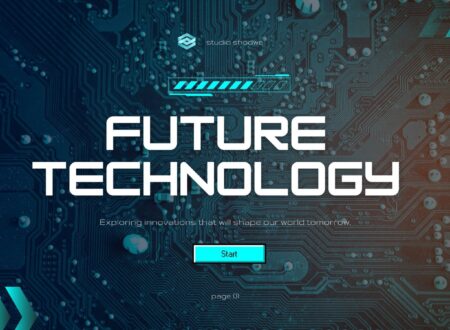Introduction to the concept of tech for good
In a world where technology evolves at lightning speed, it’s inspiring to see how innovation can be harnessed for the greater good. The concept of “tech for good” highlights the potential of digital solutions to address some of society’s most pressing challenges. From education and healthcare to environmental sustainability, tech is not just about convenience—it’s about creating meaningful change. As we dive into this topic, we’ll uncover innovative initiatives that are making waves and reshaping lives across the globe. Join us on this journey through extraordinary examples of technology paving the way for a brighter future.
Examples of tech for good initiatives:
Educational initiatives have transformed learning. Online platforms like Khan Academy and Coursera provide free access to knowledge worldwide. These resources bridge gaps, enabling anyone with an internet connection to learn from experts.
In healthcare, telemedicine is revolutionizing patient care. Virtual consultations are making it easier for individuals in remote areas to receive medical advice without the need for travel. This convenience improves health outcomes significantly.
Digital health records streamline patient information sharing among providers, enhancing efficiency and accuracy in treatment decisions. Additionally, innovative medical devices such as wearable monitors empower patients to track their health metrics in real-time.
In environmental efforts, smart energy systems optimize electricity use within homes and businesses. Sustainable transportation solutions like electric vehicles reduce emissions while improving air quality.
Waste reduction technologies focus on recycling processes that minimize landfill impact, promoting a circular economy where materials are reused rather than discarded. Each of these examples showcases how technology can create meaningful change across various sectors.
A. Education: online learning platforms, accessibility aids, and virtual classrooms
Education is evolving, thanks to technology. Online learning platforms have made knowledge accessible like never before. Students from all walks of life can dive into courses ranging from coding to philosophy with just a few clicks.
Accessibility aids are transforming the educational landscape. Tools such as screen readers and speech recognition software empower individuals with disabilities to engage fully in their studies. Everyone deserves a chance to learn without barriers.
Virtual classrooms create dynamic environments for interaction and collaboration. Students can connect across the globe, sharing ideas and perspectives that enrich their learning experience. These digital spaces foster community while breaking down geographic limitations.
Innovative teaching methods emerge daily, driven by tech advancements. Gamification and immersive simulations captivate learners, making education both enjoyable and effective. With these tools at hand, the future of education looks bright and inclusive for all.
B. Healthcare: telemedicine, digital health records, and medical devices
Telemedicine has revolutionized how we access medical care. Patients can now consult with healthcare providers from the comfort of their homes. This not only saves time but also increases convenience for those in remote areas.
Digital health records have streamlined patient information management. Doctors can quickly access a patient’s history, improving diagnosis and treatment plans. The shift to electronic documentation enhances accuracy and reduces errors.
Innovative medical devices are transforming patient outcomes as well. Wearable technologies monitor vital signs in real-time, providing critical data that allows for proactive interventions. These advancements empower patients to take control of their health and communicate better with their caregivers.
The integration of technology into healthcare systems is reshaping how services are delivered, making them more efficient and accessible than ever before.
C. Environment: smart energy systems, sustainable transportation, and waste reduction technologies
Smart energy systems are revolutionizing how we consume and manage power. By integrating advanced technology, they optimize energy use in homes and businesses. This not only lowers bills but also reduces our reliance on fossil fuels.
Sustainable transportation is another game changer. Electric vehicles, bike-sharing programs, and public transit apps encourage eco-friendly travel options. These innovations help minimize traffic congestion and lower emissions in urban areas.
Waste reduction technologies play a crucial role as well. From composting solutions to smart bins that track waste levels, these tools promote recycling and reduce landfill overflow. They empower communities to make conscious choices about their waste management practices.
Together, these initiatives forge a path toward a greener future, harnessing technology’s potential for environmental stewardship while creating smarter cities worldwide.
Impact of tech for good on society:
The impact of tech for good on society is profound and multifaceted. One significant benefit lies in the increased access to education. Online learning platforms break geographical barriers, enabling students from remote areas to connect with quality resources and educators.
Healthcare has also experienced a transformation. Telemedicine allows patients to consult doctors from their homes, making healthcare more accessible than ever before. Digital health records streamline patient care, ensuring that essential information follows individuals wherever they go.
The environment benefits substantially as well. Smart energy systems optimize resource use, leading to reduced waste and lower carbon emissions. Sustainable transportation technologies encourage eco-friendly travel options, lessening our reliance on fossil fuels.
These advancements not only improve individual lives but also foster a collective responsibility towards creating a better future for all. The ripple effects extend beyond immediate users, influencing communities and ecosystems alike.
A. Social benefits such as increased access to education and healthcare
Tech for good has transformed how people access education and healthcare. With the rise of online learning platforms, students from all backgrounds can learn at their own pace. No longer are geographical barriers a hindrance to acquiring knowledge.
Virtual classrooms have created inclusive environments where everyone feels welcome. Accessibility aids enhance participation for individuals with disabilities, ensuring that no one is left behind in pursuing their academic goals.
In healthcare, innovations like telemedicine bring medical expertise right into homes. Patients can consult doctors without traveling long distances or waiting weeks for appointments. This immediate access saves time and reduces stress.
Digital health records streamline communication between patients and providers, improving overall care coordination. These advancements empower communities by providing essential services to those who previously faced obstacles accessing them.
B. Environmental benefits like reduced carbon footprint
The environmental benefits of tech for good are profound and far-reaching. Innovative solutions in this sector help us tackle pressing issues like climate change and resource depletion.
Smart energy systems, for instance, optimize the use of renewable resources. They allow households to harness solar power more efficiently or manage energy consumption better through smart grids. This not only reduces reliance on fossil fuels but also lowers utility costs.
Sustainable transportation technologies have taken off as well. Electric vehicles (EVs) contribute significantly to reducing greenhouse gas emissions compared to traditional gasoline-powered cars. With advancements in battery technology and charging infrastructure, EV adoption is becoming more feasible across various demographics.
Waste reduction technologies play a crucial role too. From apps that connect consumers with surplus food from restaurants to innovative recycling methods that minimize landfill waste, these initiatives promote a circular economy rather than a linear one.
These efforts collectively lead to a reduced carbon footprint, showing how technology can align with environmental stewardship. By integrating tech for good into our daily lives, we move closer to building a sustainable future while fostering social equity along the way.





